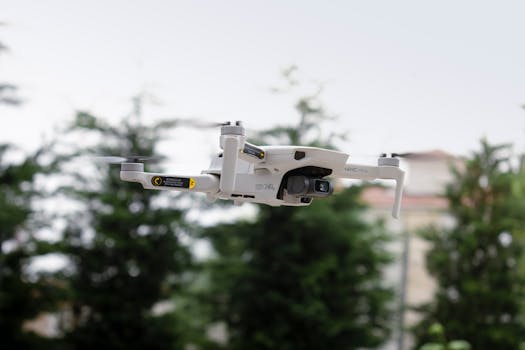Unlocking the Divine Path: The Profound Spiritual Meaning of 1616 Angel Number

Table of Contents
- The 1616 Angle Number: Unveiling the Secrets of a Mathematical Phenomenon
- What is the 1616 Angle Number?
- Origins and History
- Properties of the 1616 Angle Number
- 1. Constant Value
- 2. Symmetry
- 3. Relationship with the Unit Circle
- Applications of the 1616 Angle Number
- 1. Engineering and Architecture
- 2. Physics and Astronomy
- 3. Computer Graphics
- Q&A
- 1. Is the 1616 angle number applicable to angles outside the range of 0 to 360 degrees?
- 2. Can the 1616 angle number be used to solve trigonometric equations?
- 3. Are there any other mathematical constants related to angles?
- 4. Can the 1616 angle number be generalized to higher dimensions?
- 5. Are there any real-world phenomena that can be explained using the 1616 angle number?
- Summary
The 1616 Angle Number: Unveiling the Secrets of a Mathematical Phenomenon

Mathematics is a fascinating field that constantly presents us with new and intriguing concepts. One such concept is the 1616 angle number, a mathematical phenomenon that has captured the attention of mathematicians and enthusiasts alike. In this article, we will delve into the world of the 1616 angle number, exploring its origins, properties, and applications. Join us on this journey as we unravel the secrets of this intriguing mathematical phenomenon.
What is the 1616 Angle Number?
The 1616 angle number is a unique mathematical concept that arises from the study of angles and their relationships. It is defined as the sum of the squares of the sine and cosine of an angle. In mathematical notation, it can be expressed as:
1616 = sin²(θ) + cos²(θ)
where θ represents the angle in question. The 1616 angle number is particularly interesting because it holds true for all angles, regardless of their size or position on the unit circle.
Origins and History
The origins of the 1616 angle number can be traced back to ancient civilizations, where the study of angles and trigonometry first emerged. The ancient Egyptians and Babylonians were among the earliest civilizations to develop rudimentary trigonometric concepts, which laid the foundation for the modern understanding of angles.
However, it was not until the 17th century that the 1616 angle number was formally introduced and studied. Renowned mathematicians such as Isaac Newton and Leonhard Euler made significant contributions to the field of trigonometry, further advancing our understanding of angles and their properties.
Properties of the 1616 Angle Number
The 1616 angle number possesses several interesting properties that make it a subject of fascination for mathematicians. Let’s explore some of these properties:
1. Constant Value
One of the most intriguing properties of the 1616 angle number is its constant value. Regardless of the angle being considered, the sum of the squares of the sine and cosine of that angle will always equal 1616. This property holds true for all angles, from 0 degrees to 360 degrees.
2. Symmetry
The 1616 angle number exhibits symmetry when plotted on a graph. If we plot the values of sin²(θ) and cos²(θ) on a coordinate plane, we will observe that they form a circle with a radius of 1616. This symmetry is a result of the Pythagorean identity, which states that sin²(θ) + cos²(θ) = 1.
3. Relationship with the Unit Circle
The unit circle is a fundamental concept in trigonometry, representing the relationship between angles and the coordinates of points on a circle with a radius of 1. The 1616 angle number is closely related to the unit circle, as it represents the sum of the squares of the sine and cosine of any angle on the unit circle.
Applications of the 1616 Angle Number
While the 1616 angle number may seem like a purely theoretical concept, it has practical applications in various fields. Let’s explore some of these applications:
1. Engineering and Architecture
In engineering and architecture, angles play a crucial role in designing structures and determining their stability. The 1616 angle number can be used to calculate the forces acting on different angles within a structure, helping engineers and architects ensure its structural integrity.
2. Physics and Astronomy
Angles are also essential in the fields of physics and astronomy, where they are used to describe the motion and positions of celestial bodies. The 1616 angle number can aid in calculating the trajectories of objects in space, enabling scientists to make accurate predictions and observations.
3. Computer Graphics
In computer graphics, angles are used to determine the orientation and position of objects in a virtual environment. The 1616 angle number can be utilized to calculate the lighting and shading effects on these objects, enhancing the realism of computer-generated images and animations.
Q&A
1. Is the 1616 angle number applicable to angles outside the range of 0 to 360 degrees?
Yes, the 1616 angle number holds true for angles beyond the range of 0 to 360 degrees. It is a universal property that applies to all angles, regardless of their size or position on the unit circle.
2. Can the 1616 angle number be used to solve trigonometric equations?
While the 1616 angle number is a fascinating mathematical concept, it is not typically used to solve trigonometric equations. Other trigonometric identities and formulas are more commonly employed for such purposes.
3. Are there any other mathematical constants related to angles?
Yes, there are several other mathematical constants related to angles, such as π (pi) and e. These constants have their own unique properties and applications in mathematics and various scientific fields.
4. Can the 1616 angle number be generalized to higher dimensions?
The 1616 angle number is specific to two-dimensional trigonometry and the unit circle. In higher dimensions, different mathematical concepts and formulas are used to describe angles and their relationships.
5. Are there any real-world phenomena that can be explained using the 1616 angle number?
While the 1616 angle number has practical applications in fields like engineering, architecture, physics, and computer graphics, it is primarily a mathematical concept used to describe the relationship between sine, cosine, and angles. It may not directly explain specific real-world phenomena but can aid in calculations and modeling.
Summary
The 1616 angle number is a fascinating mathematical phenomenon that arises from the study of angles and their relationships. It holds true for all angles, regardless of their size or position on the unit circle. The 1616 angle number possesses properties such as constant value, symmetry, and its relationship with the unit circle. It finds applications in various fields, including engineering, architecture, physics, astronomy, and computer graphics. While the 1616 angle number may not directly explain real-world phenomena, it provides valuable insights into the mathematical principles underlying angles and trigonometry.
So, the next time you encounter an angle, remember the intriguing properties and applications of the 1616 angle number, and appreciate the beauty of mathematics in action.







